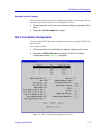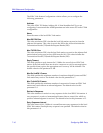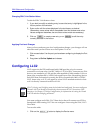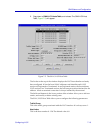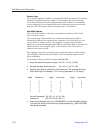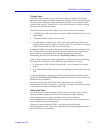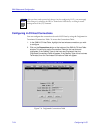
Configuring LLC2 7-21
SNA Status and Configuration
T1-Reply Timer
The Reply Timer is used to by the local node to detect a failure by the remote
station to send a required acknowledgment or response. The local node will start
the timer when it transmits either an Information LPDU or a Command LPDU
with the P bit set to BÕ1Õ. (If the LPDU is sent while the timer is already running,
the local node will reset the timer.)
The local node will reset the T1-Reply Timer when it receives one of these:
¥ An REJ (Reject) LPDU, provided a Command LPDU with P bit set to BÕ1Õ is not
outstanding;
¥ A Response LPDU with the F bit set to BÕ1Õ;
¥ An Information or Supervisory LPDU with an N
R
greater than the last N
R
received and less than or equal to the line stationÕs V
S
, provided a Command
LPDU with the P bit set to BÕ1Õ is not outstanding.
If additional LPDUs are set from the remote station after the local node has reset
the T1 timer, the timer will be restarted if acknowledgments of or responses to
those LPDUs are outstanding. If no acknowledgments/responses are
outstanding, the local node will start the Ti-Inactivity Timer (see below).
If the T1 Timer expires and acknowledgments or responses are still outstanding,
the local node will send one of the following, then restart the T1 Timer:
¥ A Supervisory LPDU with the P bit set to BÕ1Õ to solicit remote link station
status;
¥ Any Unnumbered LPDUs that were not responded to the Þrst time they were
sent.
If acknowledgments or responses are still outstanding after the number of tries
speciÞed in the N2-Expired T1 LPDUs parameter (see below), the local node will
declare the link inoperative.
The value speciÞed for the T1-Reply Timer should allow for any delays
introduced by the MAC sublayer (e.g., queuing). The value is the amount of time
in 100 millisecond units; the default value is 10.
T2-Recv Ack Timer
This is the Receiver Acknowledgment Timer, used by the local node to delay
sending an acknowledgment of a received Information LPDU. Delaying
acknowledgments for as long as possible minimizes the number of
acknowledgments that must be sent (since more than one received frame can be
acknowledged with one transmission).
The timer is started when the LPDU is received, and reset when the
acknowledgment is sent. If the timer expires before the acknowledgment is sent, it
must be sent as soon as possible.





